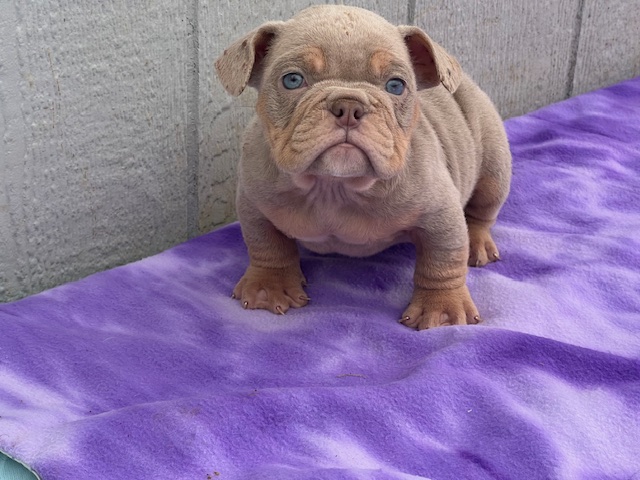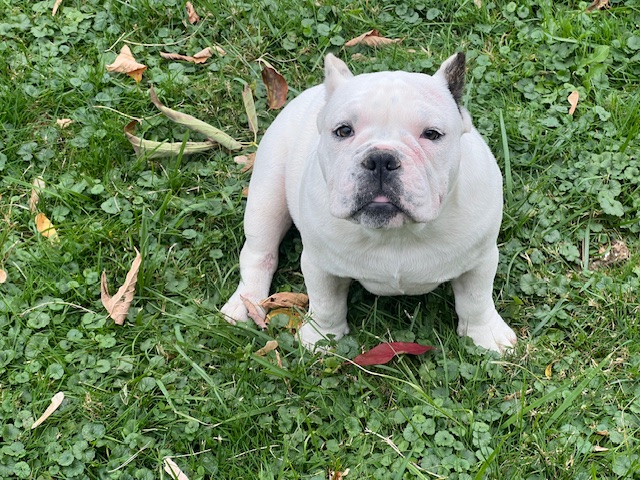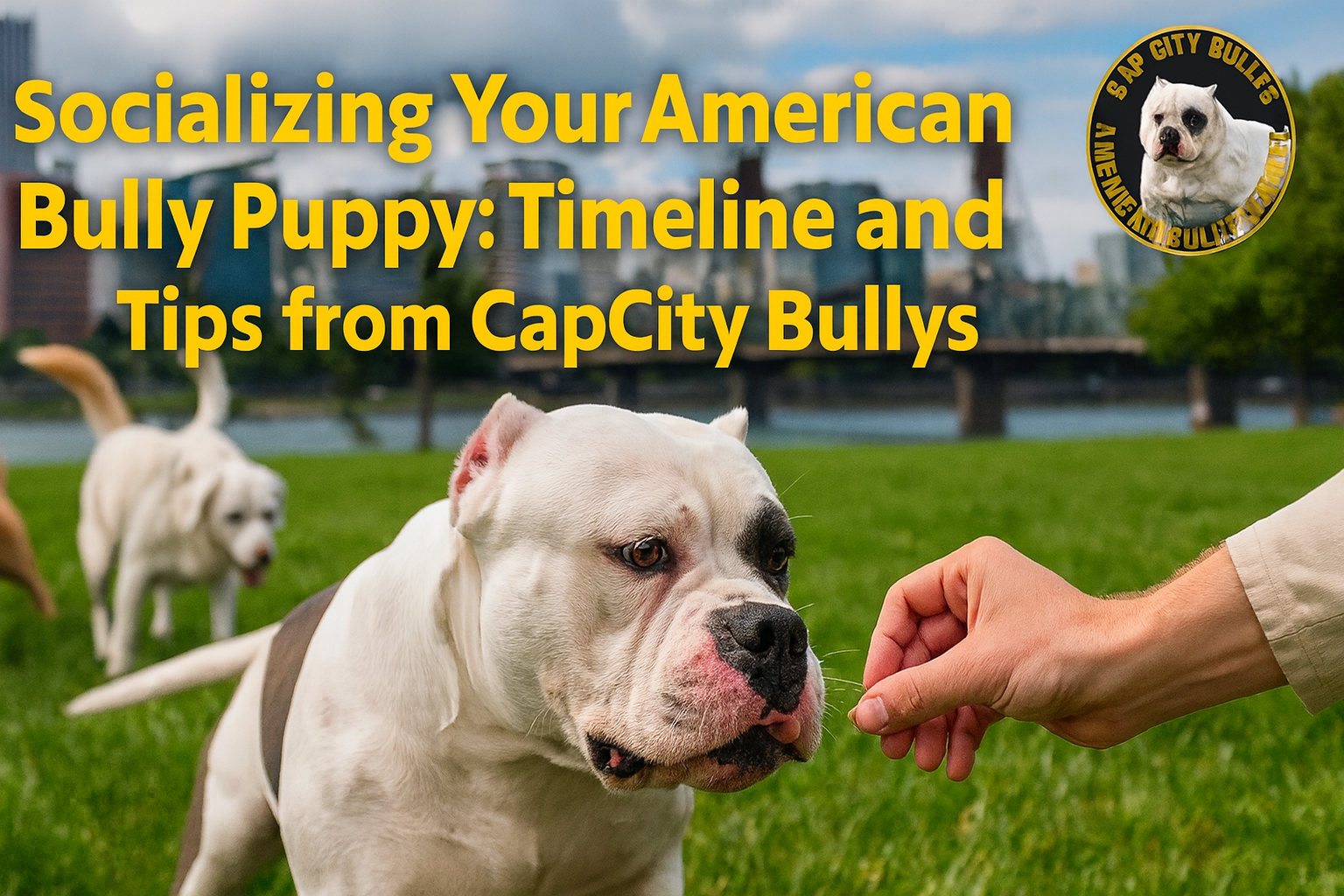Bond Before Behavior
If you want an American Bully that listens, trusts, and becomes a real part of the family, you have to start with the bond. Early training rituals aren’t just about teaching commands like sit or stay—they’re how you build connection, emotional safety, and trust. The right beginning turns a puppy who’s uncertain into a dog who looks to you, chooses you, and wants to work with you. This relationship doesn’t happen by accident; it’s built deliberately in the first weeks through consistent rituals that mix structure, positive experiences, and mutual understanding. This guide walks you through those early rituals, why they matter, how they specifically fit the American Bully temperament, and what to do in the first days, weeks, and beyond to make that bond last a lifetime.
Why Early Training Rituals Matter for the Bond
Puppies have a highly sensitive developmental window—roughly from three to fourteen weeks—when what they experience shapes how they see the world, handle stress, and attach to people. Early training rituals that focus on interaction, reward, and predictable patterns teach the puppy that you are safety, leadership, and comfort. If that window is missed or mishandled, you don’t just delay obedience—you risk creating fear, confusion, or a dog that looks past you for guidance.
Training in this period should feel like play with purpose. Short, frequent sessions that combine handling, name recognition, cue association, and gentle exposure give massive returns in trust and responsiveness. This isn’t about dominance; it’s about co-creation—your puppy learning that engaging with you brings good things, stability, and clarity. That foundation is what turns basic obedience into a lifelong partnership.
Core Early Training Rituals to Build the Bond
The Name Game: Identity + Positive Association
Before any formal commands, teach the puppy that their name equals positive attention. Say their name warmly, immediately reward with a treat or soft praise, and repeat this often in calm contexts. When the puppy hears their name, they’ll look to you because it has been consistently paired with something good—not because they are forced to respond. Make sure everyone in the household uses the same tone and timing, so the name becomes a shared language of connection.
Touch-and-Treat Handling Drill
American Bully puppies need to be comfortable being handled—paws, ears, mouth, and body—because future vet visits, grooming, and collar adjustments all depend on that baseline of trust. Daily, in short 2–3 minute windows, gently touch each body area while giving a treat. The ritual is simple: handle, reward, pause, repeat, and always end while the puppy is still positive. Over time the puppy learns that examination and touch from you equals calm and reward, not fear or pressure.
Crate Introduction as Comfort
The crate should become a safe haven, not punishment. Start by making the crate inviting: soft bedding, occasional toys, and treats tossed in while the door stays open. Call the puppy in, reward voluntary entry, and gradually increase tolerance—close the door briefly, then open it and reward calm behavior. Never use the crate immediately after discipline. The ritual is about gentle ownership of space: the puppy chooses to go in because it feels good, not because they’re forced.
Short, Positive Training Sessions
American Bullies are intelligent but can get bored or distracted if you overdo it. Structure several mini training rituals throughout the day—5 to 10 minutes each—where you mix basic cues (“sit,” “come,” “look”) with play and praise. Always end on a win so the puppy anticipates the next session. That rhythm (engage, reward, break) builds a cooperative mindset: training becomes a shared activity, not a chore.
Early Social Exposure Ritual
Socialization weaves through bonding; it’s not separate. Introduce the puppy to new people, textures, mild sounds, and calm dogs in controlled increments. Have visitors sit quietly, allow the puppy to approach on their own terms, and reward relaxed curiosity. Let them feel different surfaces under their paws, hear everyday household noises gently, and meet one new person at a time. The ritual here is “one new positive experience per interaction,” followed by downtime—new thing, reward, rest. That teaches the puppy the world is safe when you’re the anchor.
Building Trust: Rituals Beyond Basic Commands
Predictable Daily Routine
Dogs thrive on consistency. Create a daily rhythm: morning name-and-walk greeting, midday handling and enrichment, evening calm connection. These ritualized timeblocks make you predictable in the healthiest way; the puppy learns that you’re the source of food, comfort, structure, and affection. Consistency becomes emotional scaffolding—when the world gets noisy, they know what part of the day anchors them.
Reward-First Relationship
Instead of correcting what goes wrong, ritualize noticing and rewarding what’s right. If the puppy jumps, redirect into a sit and immediately reward. If they’re hesitant about something new, back off and reward calm observation. That “reward-first” pattern builds choice: your puppy cooperates not because they’re scared, but because calm, attentive behavior gets attention and positivity.
Leash-and-Connection Walks
Early leash work isn’t about distance—it’s about engagement. Use the leash to maintain gentle proximity while letting the puppy explore. Call their name, reward for checking back, and guide without pulling. Those short, frequent connection walks teach the puppy that moving with you is satisfying, not restrictive. Over time they don’t just walk beside you—they choose to.
Check-In Pause
Build a simple ritual into the day: a five-second pause where the puppy sits calmly, you make eye contact, and give a small reward. It’s a reset. Whether you’re transitioning from play to rest or before heading out, this tiny ritual reinforces presence—“we’re connected right now.” It’s a subtle but powerful trust-building moment that becomes a shared language without drama.
Calm Arrivals and Departures
High-energy hellos and dramatic goodbyes create emotional peaks that can fuel anxiety. Ritualize soft departures (minimal fanfare) and calm greetings. Reward settling behavior when you return rather than reacting to excitement. Over time the puppy learns that your comings and goings are neutral, safe, and predictable—less stress, more equilibrium.
Breed-Specific Notes for American Bullies
American Bullies look confident, and people often react before they interact. Early rituals must include exposure to that—stares, cautious approaches, and different human energies. The ritual here is to have controlled “appearance exposure” sessions: let strangers observe calmly, reward the puppy for relaxed body language, and remove from overstimulation before they tighten up. That teaches them the world’s attention is no threat when you are the steady base.
Bullies can also go from alert to over-alert quickly in chaotic environments. Introduce new stimuli—sounds, layouts, mild unpredictability—in a measured ritualized progression: new thing at a safe distance, reward calm, repeat a little closer over sessions. That pattern prevents their natural awareness from turning into unnecessary guarding, keeping them confident rather than reactive.
Why the Rituals Work
These rituals build more than obedience. They build emotional currency. Positive reinforcement, predictability, gentle leadership, and shared moments create a relationship where the puppy chooses you—not because you force it, but because the association of you equals clarity, comfort, and reward. The early weeks are when this wiring is most malleable; mistakes can be corrected, but consistent practice accelerates the bond. These aren’t gimmicks—they’re small, repeated choices that compound into trust, reliability, and a dog who wants to be with you, not just follow orders.
Integrating Bonding and Socialization
Socialization doesn’t need to be a separate checklist. It lives inside the bond-building rituals. A name game with a new person, a handling session that includes a visitor’s gentle touch, a calming check-in after exposure to a new sound—all of those are both training and socialization. Frame novelty as shared experience: invite, support, reward, and rest. That way, the puppy’s internal story becomes: “New things happen with my person, and good things follow.” That internal narrative is what makes confidence stick.
Common Early Mistakes and How Rituals Prevent Them
- Mixed signals from multiple people: If everyone uses different cues or reward styles, the puppy is unsure what you want. The ritual of short joint sessions and shared language between handlers keeps everyone aligned.
- Dumping too much new exposure at once: Overwhelm causes shutdown. The “one new thing per interaction” ritual keeps stress low and progress steady.
- Skipping daily emotional resets: If training becomes transactional, the connection fades. The five-second check-in daily reaffirms partnership.
- Punishing fear or hesitation: That breaks trust fast. Reward-first redirection preserves the positive foundation and retrains the puppy gently.
A Sample First Two Weeks Ritual Plan
Days 1–3:
- Name game several times a day in calm moments.
- Gentle handling drill (paws, ears, mouth) with treats.
- Crate exploration, voluntary entries, short calm exits/entries.
- Establish basic routine: feeding, quiet, play, and check-in pause.
Days 4–7:
- Short leash-connection walks with recall practice.
- Introduce one new texture or surface per day.
- Meet one new person calmly, reward approach.
- Begin simple cue work: sit and look, always ending on positive.
- Reinforce calm arrival/departure ritual.
Week 2:
- Expand handling to simulate grooming (brush touch, collar practice).
- Add one new mild sound exposure per day, paired with calm reward.
- Lengthen crate comfort gradually.
- Build brief “skill check” with name recognition, response to call, and calm focus.
- Continue social exposure in controlled, predictable increments.
Track progress with a journal or short video log. Note what was easy, what needs a softer revisit, and celebrate consistency.
Keeping the Bond Alive as They Grow
The rituals don’t end when the puppy becomes a dog—they evolve. Keep refreshing basics: a weekly mini review of cues, monthly new-environment outings, and occasional “surprise thank you” rewards for reliability. The small rituals become adult habits: the dog checks in on cue, stays calm during change, and chooses proximity because the emotional ledger has been built over time. That’s the difference between a trained dog and a true companion.
Practical Tools to Support the Rituals
- Checklist pad: Create a simple daily bonding/training checklist (name game, handling, exposure, calm check-in) to keep consistency.
- Reward variety: Rotate treats, toys, praise, and play to keep motivation fresh.
- Video diary: Record short daily clips—helps you see subtle regressions or wins and serves as a memory anchor.
- Family alignment session: Once a week, review language and expectations with everyone who interacts with the puppy to ensure unified rituals.
Wrapping It Up
The difference between a good American Bully and a dog who truly “gets you” starts in those early weeks when training and bonding blend. These rituals—name association, handling, predictable routines, mindful social exposure, calm transitions, and reward-first behavior shaping—aren’t complicated. They’re consistent and emotionally intelligent. Put them into practice, keep them varied but predictable, and the puppy you raise will be more than obedient; they’ll be connected.
You’ve got the blueprint. Now build it into your days. The payoff is a companion that trusts you, responds without hesitation, and chooses you—not because they have to, but because the relationship was built right from the start.
Next Steps
- Make a simple printable “First 30-Day Bonding Ritual” checklist to keep close.
- Start a short daily video log to track responses and adjust exposure.
- Schedule a weekly “refresh and align” with any other household members involved.
- Introduce one new positive experience daily and always follow with a calm check-in.
- Celebrate the small wins—connection compounds when you acknowledge progress.
Welcome to Cap City Bullys — The #1 Choice for Show-Quality American Bully Puppies
At Cap City Bullys, we’ve spent 15+ years perfecting the art of breeding purebred, registered American Bully puppies that stand out for their muscular conformation, rock-solid health, and calm, even temperaments. Located in Erie, Pennsylvania, our family-run kennel serves bully enthusiasts from New York to California—and ships champion-line puppies safely across the globe.








